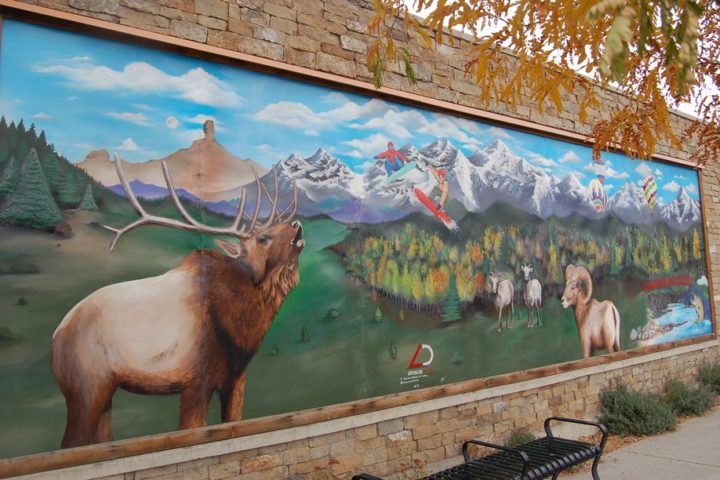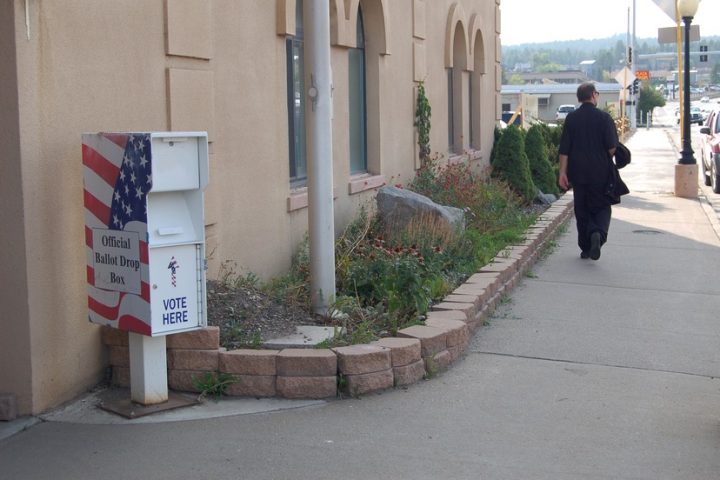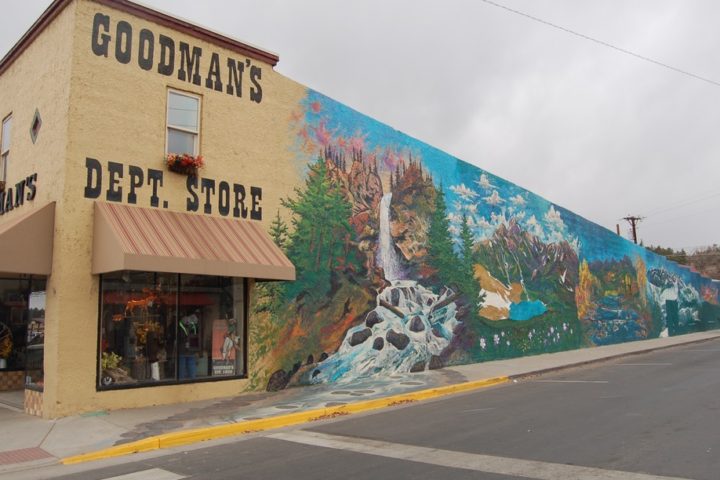As early-voting lines form all across the US, with citizens waiting for hours in some cases, and voting officials struggle to keep up — it’s been especially bad, apparently, in Georgia… Wisconsin… Tennessee… Texas… and New Mexico…

…our election-season life here in Pagosa Springs has seemed pretty ordinary, thanks mainly to decisions made by the Colorado government years ago, to conduct every local and state election by mail ballot. Voters can drop their ballots at the US Post Office, anytime, day or night, or deposit them in the ballot box located in front of the old County Courthouse.
I doubt many people will want to vote “in person” here in Archuleta County, considering the increase in reported COVID infections over the past couple of weeks. On September 1, we had 48 confirmed cases among local residents (not including tourists) and the count grew to 55 at the end of the month — an increase of only 7 cases. Since October 1, however, Archuleta County has reported 13 new cases — about twice the rate of increase we saw in September. Six of those cases showed up over the past week.
So maybe we’ll be using the Courthouse drop box?
Quite a few candidates and issues on the Colorado ballot this November, some of which may be familiar, and some certainly unfamiliar. Does anyone, for example, know anything about the several judges seeking to be retained in office? Carlos A. Samour Jr? Ted C. Tow III? Craig R. Wellington? Suzanne Fairchild Carlson?
I surely don’t.
Nevertheless, living in a democracy as we do, we can submit our ballots — if we so desire — without knowing much at all about the candidates and issues. Or we can leave boxes unchecked, if we’re feeling uncertain… or if we’ve concluded that every candidate is an equally poor choice.
One public issue that we’ll probably never not have a chance to vote on — this year or any future year — was discussed at some length at the Town Council’s special meeting on October 12.
Public art.
As mentioned in some recent editorials, the Town government has had a banner year, so to speak, in terms of sales taxes revenues. Despite the global economic turmoil caused by the coronavirus, the Town’s sales tax collections through August 2020 have thus far been about 18% higher than the projections included in the Town’s 2020 budget. (Sales tax reports come in about two months late, so we don’t yet know how things went in September.) Some of the windfall will no doubt be applied to higher employee salaries, but there might be a few dollars left over that could be spent on… well, almost anything. Our excess sales taxes could be used to support affordable housing, perhaps?
Or public art?
The Pagosa Springs government has been talking about “public art” for at least the past 15 years. (The County government has never has a serious discussion about the idea, that I can recall, save for a very brief conversation, once, when a citizen group proposed a mural for the blank west face of the County Courthouse.)
The Town’s public art efforts, thus far, have consisted of financial support for a couple of murals, over the years, and some sculpted trees.
In 2010, with the help of funding arranged by the Pagosa Springs Arts Council, artists Jeff Haas and Haley Goodman created an imaginative mural for the faux-stone wall between Galles Properties and The Rose Restaurant, portraying a herd of horses running near Chimney Rock National Monument. The new mural replaced an older, weather-worn mural that portrayed a few iconic images on a outdoor-scenic background; the figures seemed to have no relationship to one another, in terms of size or placement. The new Haas-Goodman mural presented a unified concept, for a change.

But the painted plywood panels, exposed to our harsh summer sunshine, began to fall apart after about seven years, and the Arts Council began to look for a replacement mural. They settled another painting by a local graphic artist who signed the completed mural with a business name: Adrenaline Designs — a business registered to a certain Estreberto Palma Villela. The new mural also featured animals — an elk, a bighorn sheep, two mountain goats, a soaring trout — with Chimney Rock and other mountains in the background. But though the wild game dominated the painting, the artist managed to suggest the existence of human beings as well: two snowboarders sailing high above a grassy meadow on what appear to be rocket-powered snowboards, and four hot air balloons drifting above the San Juan River.

Another wall mural is currently nearing completion, just around the corner from the Main Street mural, on the east-facing wall of Goodman’s Department Store. Artist Markus Hughes intended the painting to portray “Pagosa Country through the four seasons.” One clever detail has the waterfall, shown on the left end of the painting, running across the sidewalk as a painted ‘creek’. (You might think, for a moment, that you can hear the water bubbling over the rocks, but it’s actually the sound of the traffic on Highway 160.)
As I see it, there are two types of ‘public art.’ Both types are located in places where the general public can view them, and possibly interact with them.
One type is funded largely or completely by public taxes, and is typically located on public property, or inside a public building.
The other type is funded largely or completely by a private individual or corporation, and it often resides on private property where the public is able to view it.
But the line between the two types is often blurred.
Read Part Two, tomorrow…


